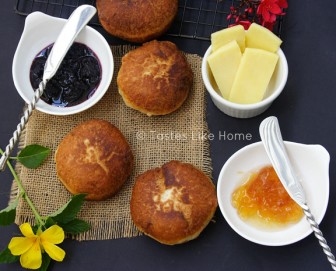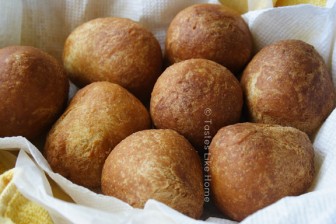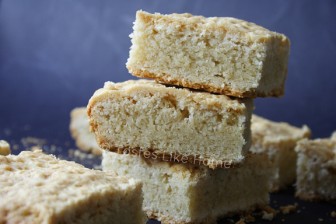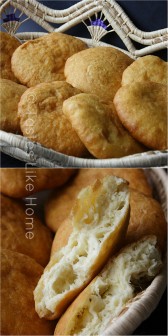For the love of fried dough
Hi Everyone,
Do you like fried bakes of any kind? Then prepare to cheat on them with Johnny Cakes. There is only one catch (oh come on, you know there had to be a catch if you’re going to cheat); determining which version of Johnny Cakes, you want to pile on your plate, oblivious to the incredulous stares of those around you. The reason for that sort of look is because they are afraid that by the time you’re done there will be none or very few left for them!
Journey Cakes as they were originally called, were created to take on long enduring journeys. First made with ground corn, this hearty bread was most likely created by Indigenous peoples and travelled from North America to various parts of the world including the Caribbean. All across this region from the Bahamas, to Jamaica to St Lucia right down the chain of islands, you can find a version of Johnny Cakes. Some countries still make theirs with cornmeal in the mix while others use only wheat flour.
There is no one recipe for Johnny Cakes, each country you visit and most likely each home too, will have their own version for making these soft, tender disks of fried dough. Sold on street corners, in restaurants at food stalls, stands and shacks, Johnny Cakes can be eaten as is or with the very popular fried salt fish, pickled mackerel, souse, roast meats, cheese, eggs, ham, jam or whatever you like. A piece of fried fish, barbequed pigtail or jerk pork with lashings of hot pepper sauce with 2 or 3 Johnny Cakes jammed up next to it is enough to make any strong person weak with pleasure. Wicked!

The generous amount of vegetable shortening or butter used in the various recipes is what contributes to the tenderness of Johnny Cakes. It is for this reason alone that Johnny Cakes are so sinfully delicious. Most recipes for Johnny Cakes (also called fried dumplings in places like Jamaica), call for them to be fried. However, not all Johnny Cakes are fried, some are baked. The texture and taste, though equally delicious, are very different.
I tested four recipes for this column – one from the Bahamas, one from the US Virgin Islands, one from Antigua & Barbuda and of course, Jamaica. I was curious to find out how different Johnny Cakes are compared to bakes. The truth is they look very similar on the outside but the texture is different, and if the recipe used asks for butter, then you taste the wonderful rich flavour of the butter too.
One of the things that I found interesting about most of the recipes I used is that once the dough was well-kneaded, the Johnny Cakes were to be cooked immediately. There was no need as there usually is when making certain types of bakes for the dough to rest. I liked the idea of being able to get to the Johnny Cakes immediately. However, I noticed that by the time I got down to the last 2 – 3 pieces of dough, once they hit the hot oil, they puffed up more than the others and I know that this is because the dough had gotten a chance to rest and so the gluten was able to relax, resulting in a more puffy Johnny Cake. Pure love.

One recipe called for the Johnny Cake to be baked in oven. I think this version is what was done long ago (the baking that is). The cornmeal would have been mixed to form a dough and then be placed over some form of indirect heat to cook. The other three recipes required deep or pan-frying with the difference being the appearance of the final product. The differences between the three recipes for fried Johnny Cakes are that two called for butter and the other for vegetable shortening. The ones that required butter used twice as much butter as the one with shortening. In other words, one recipe called for 1 tablespoon of vegetable shortening to 2 cups of flour while the others called for 2 tablespoons of butter to 2 cups of flour.
The Johnny Cakes with butter felt and tasted richer. They also got a deeper brown when frying and that was because of the higher butter content. The vegetable shortening Johnny Cake was tender and lent itself to having a thick pocket in which you could stuff things to eat with it.

The Jamaican Johnny Cake is the only recipe that called for the dough to be rested and the difference was evident while cooking – the dough swelled generously. Once cooked, the outside had that signature crisp crust and the inside so, so tender.
The baked Johnny Cake called for the most fat (4 ounces of vegetable shortening) to 1 ½ cups of flour. I barely had to put water to bring to it a dough and when it did come together as a dough, I was generous with the flour so that I could knead it for a couple of minutes. Once baked, the crumb was tender, moist and airy, almost light. The crust felt like a pastry as I cut into it while still warm. I liked all four and if I had to choose a favourite, it would be like splitting hairs.

The tasters – man they were no help at all. I gave them cards with questions to answer and they all forgot! When I asked, most them responded with, “Cynthia, gosh, when you making some of these again?” Another, gave a rather cheeky response, “Girl, I can’t eat and write! And after feasting on these Johnny Cakes, I couldn’t think coherently. I think from that you should know my opinion.” Well, the key word there was feasting so at least I know the Johnny Cakes didn’t necessarily cause the brain to malfunction. And yet another taster’s response: “I am so sorry. When I got the bakes, I mean Johnny Cakes, all I was thinking, ‘God is good, I don’t have to cook this evening.’ ”
So, who’s up for making some Johnny Cakes? You don’t have to do like me and make all four in one day.
Cynthia
Cynthia@tasteslikehome.org
www.tasteslikehome.org
Antiguan Johnny Cakes
(Adapted by Cynthia Nelson)
Yield: 8 – 10
INGREDIENTS
2 cups all purpose flour
1 tablespoon baking powder
¼ teaspoon ground cinnamon
¼ teaspoon salt
2 tablespoons sugar
2 tablespoons butter
½ – ¾ cup cold whole milk
Oil for deep frying
DIRECTIONS
Add the flour, baking powder, cinnamon, salt and sugar to a large bowl and mix well
Rub butter into flour until it resembles a fine crumble
Add milk a little at a time to form a dough. When the dough comes together, knead for 2 – 3 minutes
Heat oil for deep frying – about 350 degrees F
Divide dough into 8 – 10 equal pieces, roll into balls and then flatten between the palm of your hands or roll into ¼ – inch thickness
Frying one at a time and drain on paper towels. The dough will sink to the bottom when added to the oil and then float within 14 seconds
NOTE
For Jamaican Johnny Cakes, knead the dough for 5 minutes, rub a little oil on the dough and then cover in a bowl with plastic wrap or an airtight container and let it rest for 30 minutes. After resting, cut dough into 8 – 10 equal pieces and roll into firm balls and set aside while oil is heating. Deep fry in batches of 3 – 4 depending on the size of your pan. Each batch should take 5 – 8 minutes depending on the size of the balls.
For a more traditional appearance of the Johnny Cake (Antiguan & Jamaican), once each piece of dough is cut, knead each piece by taking one end and folding it to the middle, repeat this action several times turning the dough with your fingers. To fry, add the oil for shallow pan-frying to a flat-bottomed pan instead of a curved bottom pan such as a karahi or wok.
Bahamian Johnny Cake
(Adapted by Cynthia Nelson)
Yield: 1 (8 x 8” pan)
INGREDIENTS
1 ½ cups all purpose flour, plus extra for dusting
¼ teaspoon table salt
1 tablespoon baking powder
3 tablespoons sugar
¼ teaspoon ground cinnamon
4 oz. cold butter or vegetable shortening
2 – 3 tablespoons cold water
DIRECTIONS
Preheat oven to 350 degrees F
Lightly oil an 8 x 8-inch baking dish or pan
Add the flour, salt, baking powder, sugar and cinnamon to a large bowl and mix well
Rub the butter or shortening into the flour mixture until it resembles a fine meal or crumble
Add water to bring together the flour mixture, start with 2 tablespoons of water first. When the dough comes together, turn it onto a floured work surface and knead for 2 minutes or until smooth; dust with additional flour as necessary
Transfer the dough to the baking dish/pan and using your hands, spread the dough in an even layer covering the entire dish/pan. Prick all over the dough with a fork
Bake for 35 – 40 minutes or until a tanned crust develops
Remove dish/pan from oven and place on a wire rack to cool for 6 minutes, then remove Johnny Cake and continue to cool on wire rack
Cut into squares when cooled.
St Thomas Johnny Cakes
(Adapted by Cynthia Nelson)
YIELD: 8
INGREDIENTS
2 cups all purpose flour
2 teaspoons baking powder
2 tablespoons sugar
½ teaspoon ground cinnamon
¼ teaspoon table salt
1 tablespoon vegetable shortening
½ – ¾ cup tap water
Oil for deep frying
DIRECTIONS
Heat oil for deep frying
While the oil is heating mix together the flour, baking powder, sugar, cinnamon and salt
Rub shortening into flour mixture and then add a little water at a time to form a dough. Knead dough for 2 – 3 minutes or until smooth
Divide dough into 8 equal pieces and roll into balls then flatten each ball between the palm of your hands or roll into ¼ inch thickness
Fry one at a time until brown on one side, flip and brown the other side. Total cooking time for each Johnny Cake should be 2 – 3 minutes
Drain on paper towels.





